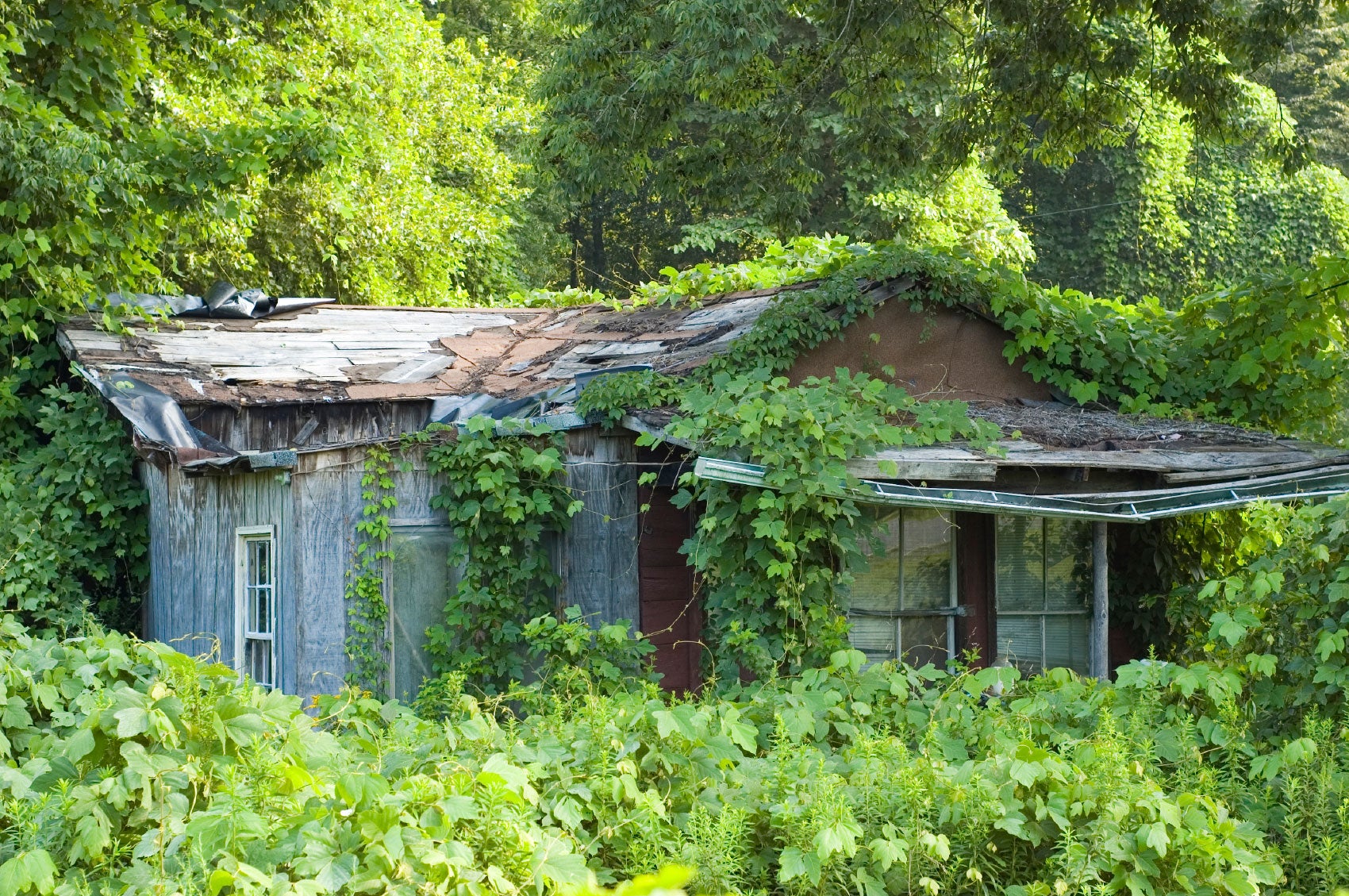What Is Kudzu: Information About Wild Kudzu Vine And Its Removal


What is kudzu? Kudzu is one of those good ideas gone bad. The plant is native to Japan and literally grows like a weed, with vines that may exceed 100 feet (30.5 m.) in length. This fair weather pest has begun to take over the native vegetation and wild spaces of many of our warmer regions. Kudzu vine removal is a widespread local issue in much of the southern United States. You can do your part with a little persistence and perhaps some chemical assistance.
What is Kudzu?
Kudzu was introduced to the U.S. in the 1930's to help with erosion control. It was also used as a forage crop and over 300,000 acres are planted in the southern states. The vine can grow up to 12 inches (30.5 cm.) in a day and is not finicky about poor soils and unfavorable conditions. The vines grow up and over almost any structure, including houses, and conceal from view entire buildings in unmonitored locations. Kudzu vine removal is essential to take back the wild spaces and land in many states. Wild kudzu vine is native to Japan and warm to temperate regions of Asia. The plant is a perennial in the pea family and produces rampant stems that coil and twine over each other. They have naturalized in their adoptive states and become noxious, invasive weeds that compete readily with native species. Wild kudzu vines spread by vegetative stems called stolons. They can be very difficult to eradicate in areas that have been invaded by uncontrolled vines. It also has very deep taproots that are almost impossible to dig out entirely. There is a main crown and then smaller crowns as the stems root at internodes. Any crown left behind in soil can re-sprout and renew the plant. For this reason, kudzu vine control may start with mechanical means but has to end in chemical treatments to fully kill all the plant material.
How to Get Rid of Kudzu
Ideally, simply pulling out the heavy vines would prevent the kudzu from returning. However, you still need to kill each of the rooted stems at their crowns. Mowing or cutting back the vegetation to the ground provides the first step in removal. Then it's time to bring out the big guns in the form of chemical herbicides. A brush killer with triplocyr or 2,4D with dicamba may be sufficient to kill the plant after repeated applications. This will be a several season battle, as the plant may return the next growing period with a vengeance. How to get rid of kudzu for certain in one season? Your best option is a systemic herbicide. You will need to spray after mowing in summer with a 5% solution mixed with a surfactant for complete plant contact. If chemical applications are not your thing, it seems you will have to use only mechanical pulling and cutting and live with the results. Overgrazing kudzu with goats seems to bring some natural control and it provides excellent nutritional value. The cut stems left to compost into the soil help fix nitrogen since the plant is a legume. If all else fails, embrace the plant. It makes excellent material for basket weaving, or you can make flour from the roots and add the leaves to recipes. There is even an old time recipe for kudzu medicine to help end alcoholism. Whatever method you choose, remember kudzu vine control is a battle you will need to be persistent on unless you want kudzu salad every day of your life. Note: Any recommendations pertaining to the use of chemicals are for informational purposes only. Specific brand names or commercial products or services do not imply endorsement. Chemical control should only be used as a last resort, as organic approaches are safer and more environmentally friendly.
Sign up for the Gardening Know How newsletter today and receive a free copy of our e-book "How to Grow Delicious Tomatoes".

Bonnie Grant is a professional landscaper with a Certification in Urban Gardening. She has been gardening and writing for 15 years. A former professional chef, she has a passion for edible landscaping.